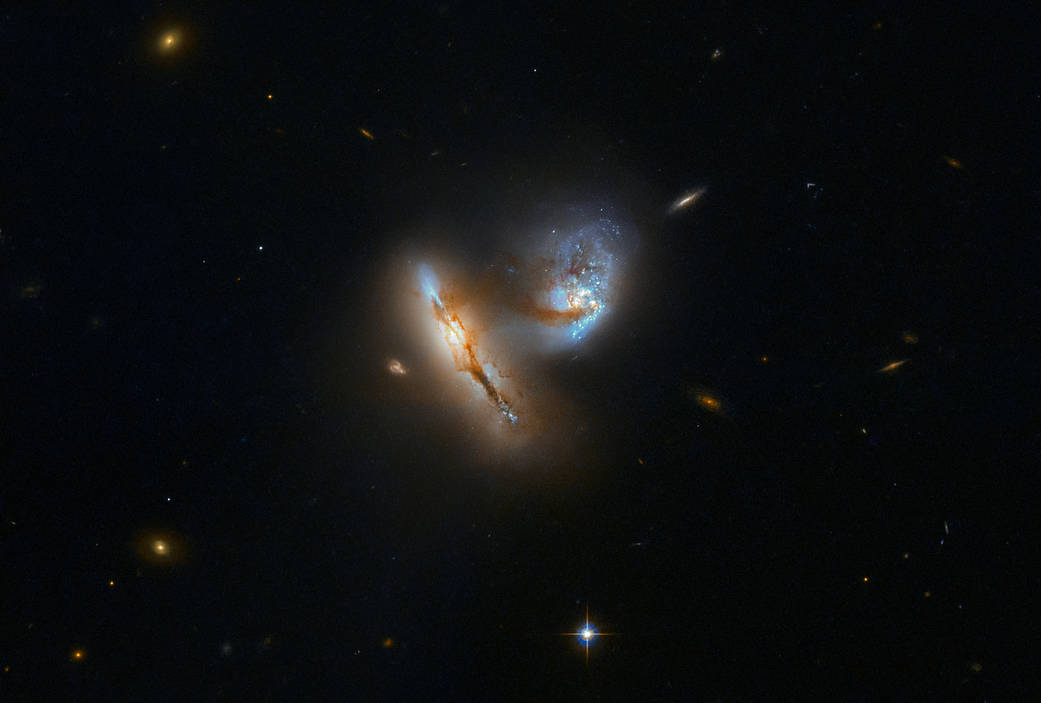The pair of strange, luminescent creatures at play in this image are actually galaxies — realms of millions upon millions of stars.
This galactic duo is known as UGC 2369. The galaxies are interacting, meaning that their mutual gravitational attraction is pulling them closer and closer together and distorting their shapes in the process. A tenuous bridge of gas, dust and stars can be seen connecting the two galaxies, created when they pulled material out into space across the diminishing divide between them.
Interaction with others is a common event in the history of most galaxies. For larger galaxies like the Milky Way, the majority of these interactions involve significantly smaller so-called dwarf galaxies. But every few billion years, a more momentous event can occur. For our home galaxy, the next big event will take place in about four billion years, when it will collide with its bigger neighbor, the Andromeda galaxy. Over time, the two galaxies will likely merge into one — already nicknamed Milkomeda.
Text credit: ESA (European Space Agency)
Image credit: ESA/Hubble & NASA, A. Evans
在这张图片中,这对奇怪的发光生物实际上是星系——由数百万颗恒星组成的领域。
星系在相互作用,这意味着它们之间的万有引力把它们拉得越来越近,并在这个过程中扭曲了它们的形状。我们可以看到一条由气体、尘埃和恒星组成的纤细的桥梁,将两个星系连接在一起。
在这张图片中,这对奇怪的发光生物实际上是星系——由数百万颗恒星组成的领域。
这对银河双星被称为UGC 2369。星系在相互作用,这意味着它们之间的万有引力把它们拉得越来越近,并在这个过程中扭曲了它们的形状。我们可以看到一条由气体、尘埃和恒星组成的纤细的桥梁,将两个星系连接在一起。
在大多数星系的历史上,与其他星系的相互作用是一种常见的现象。对于像银河系这样的大星系来说,这些相互作用中的大多数都涉及到所谓的小得多的矮星系。但每隔几十亿年,就会发生更重大的事件。对于我们的母星系来说,下一个大事件将在大约40亿年后发生,届时它将与更大的邻居仙女座星系相撞。随着时间的推移,这两个星系很可能会合并成一个——已经被昵称为Milkomeda。
资料来源:ESA
图片来源:ESA/Hubble & NASA, A. Evans







